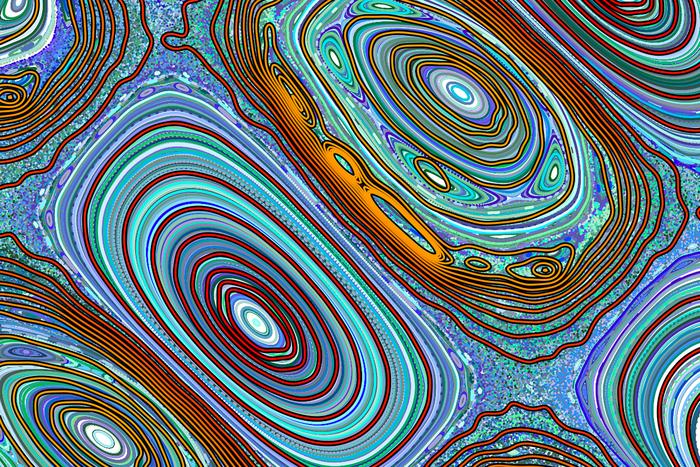A monumental stride toward realizing the dream of abundant, clean, and affordable fusion energy has been achieved by a collaborative team from The University of Texas at Austin, Los Alamos National Laboratory, and Type One Energy Group. This team has confronted and resolved a persistent and foundational challenge in stellarator fusion reactor design—a challenge that has impeded progress for nearly seven decades. Their groundbreaking research unlocks new pathways not only for stellarators but also offers promising implications for tokamak designs, potentially accelerating the advent of practical fusion power plants.
At the heart of fusion energy development lies the imperative problem of particle confinement. Fusion reactions demand plasma to be incredibly hot and dense, conditions made possible only if the high-energy alpha particles generated during the reaction remain perfectly confined within the reactor. Any leakage of these particles sabotages the plasma’s thermodynamic integrity, causing premature cooling and the collapse of sustained fusion reactions. The sophisticated magnetic confinement systems in fusion reactors like the stellarator strive to create a “magnetic bottle,” an invisible field cage formed by external coils carrying electric currents that trap these particles. Yet, the magnetic bottle is not flawless—subtle imperfections or “holes” in the field enable particles to escape, undermining reactor performance.
Predicting where exactly these magnetic field imperfections arise and how particles traverse these weak points has traditionally relied on applying Newton’s laws of motion at an incredibly granular level. While this approach is precise, it is also severely limited by computational intensity. High-fidelity simulations require exorbitantly long processing times, particularly since stellarator designers routinely explore myriad coil configurations to minimize these leakage points. Each simulation iteration with Newtonian methods demands immense computational resources, thwarting rapid reactor optimization and raising the financial barriers to progress.
The newly published research in Physical Review Letters introduces a transformative solution. The authors unveil a nonperturbative guiding center model based on symmetry theory, a mathematical approach that reimagines the underlying physics of particle motion in magnetized plasmas. This model bypasses the traditional perturbative frameworks, delivering a solution that aligns closely with Newtonian predictions but with a dramatic acceleration in computational speed—up to ten times faster. Such a leap in efficiency does not come at the expense of precision, which is crucial for the delicate process of stellarator coil optimization and particle confinement analysis.
This breakthrough is not merely an incremental refinement; it constitutes a paradigm shift in fusion reactor design philosophy. By grounding particle trajectory predictions in symmetry properties of the magnetic fields, the model captures the complex dynamics of confined particles through a fundamentally different lens. According to Josh Burby, the first author and assistant professor of physics at UT Austin, the method solves a long-standing problem that has resisted solution since the 1950s, offering practitioners a robust and practical tool that aligns theoretical purity with engineering pragmatism.
While stellarators have long been hampered by this computational bottleneck, tokamaks—another dominant fusion reactor design—stand to gain as well. Tokamaks generally face a related but distinct challenge involving “runaway electrons,” high-energy electrons that, if left unchecked, can breach containment walls and damage reactor infrastructure. The new method’s ability to identify weak points in magnetic confinement fields can aid tokamak designers to better predict and mitigate these risks, enhancing both safety and performance in fusion facilities worldwide.
The research effort is rich with multidisciplinary collaboration. Along with Burby, UT Austin’s team includes postdoctoral researcher Max Ruth and graduate student Ivan Maldonado. Los Alamos National Laboratory contributed with Dan Messenger, a postdoctoral fellow, while Leopoldo Carbajal, a computational and data scientist at Type One Energy Group, brought expertise vital to integrating theoretical insights with practical applications. This combined expertise reflects the increasingly integrated nature of contemporary fusion research, where physics, computational science, and engineering converge.
This development arrives at a pivotal juncture when fusion research has intensified globally, with facilities and private companies racing to demonstrate functioning fusion power plants. Overcoming the challenge of alpha particle leakage removes a significant obstacle in stellarator design, an architecture noted for its capability to sustain steady-state operation, a trait highly advantageous over pulsed reactors. By rendering simulations both faster and more reliable, the new model facilitates design iteration cycles to proceed swiftly, thus compressing development timelines.
Moreover, the scientific approach underlying this research invites broader applications beyond fusion energy. Magnetized plasma systems are relevant across many domains, including space physics, astrophysical plasmas, and industrial plasma devices. The ability to model particle trajectories accurately and efficiently in complex magnetic fields could thus illuminate phenomena across these diverse fields, fostering cross-pollination of ideas and technological methodologies.
Ultimately, this breakthrough represents far more than a single paper; it embodies a leap forward in fusion science, bridging theoretical physics and practical engineering with computational ingenuity. As fusion research edges closer to commercial reality, innovations like this nonperturbative guiding center model will shape the contours of clean energy’s future, dispelling long-standing technical hurdles and ushering in new eras of scientific discovery and energy sustainability.
Subject of Research: Not applicable
Article Title: Nonperturbative Guiding Center Model for Magnetized Plasmas
News Publication Date: 30-Apr-2025
Web References: https://journals.aps.org/prl/abstract/10.1103/PhysRevLett.134.175101
Image Credits: University of Texas at Austin
Keywords
Fusion energy, Alternative energy, Green energy, Nuclear energy, Fusion reactors, Nuclear power plants, Theoretical physics, Computational physics, Physics
Tags: affordable fusion power developmentclean energy advancementscollaborative fusion research effortsfusion energy researchgroundbreaking fusion technologyhigh-energy alpha particlesmagnetic confinement systemsparticle confinement challengesstellarator reactor designthermodynamic integrity in fusiontokamak fusion implicationsUniversity of Texas fusion team





